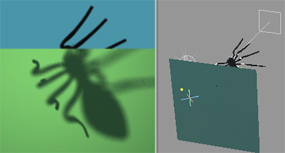
Sub-Surface Scattering Studies
During the messiah beta period, Gary Chike, one of the testers, decided to explore sub-surface scattering (SSS). Here are some of his findings. (This is a work in progress.)
The initial settings were taken directly from a candle material I made and a simple plane was used with no thickness. The Sphere, Spot and Panel light sources each can create these soft backshadow effects and I could not see any appreciable differences between them. In these examples that follow I used the Panel light for no particular reason. Of the three Translucency types, MIE Hazy was chosen arbitrarly. Uniform and Rayleigh seem to create more translucent objects and need less light intensity than MIE Hazy. Raytrace is enabled for the backlight and the Soft Shadow setting is at 3.
Note: Scaling the Panel light source does not change the softness of the shadow as would an Area Light in Lightwave.

![]()
Thickness of an SSS object and how it affects backshadows - Keeping the same settings as above. I used increasingly thicker objects. Two things occurred: Less light was able to penetrate the SSS object and the shadow of the spider became more diffuse, or, softer.
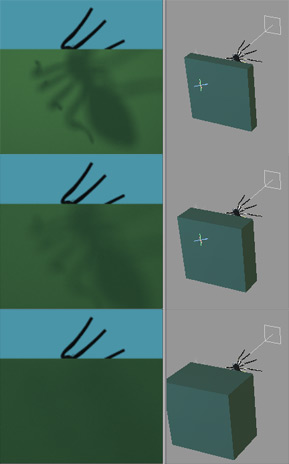
Continuing with the study, the Translucency was increased in .1 increments (.2 to 1.0). As expected, more and more light is able to penetrate the SSS object. The shadow of the spider remains unaffected.
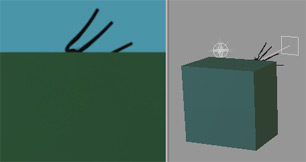
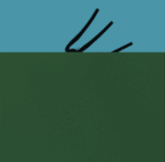
The Translucency was set to .5 and the Surface Thickness was increased in .1 increments (.1 to 1.0) seems to gradually increase the amount of "focus" of the shadow. As the Surface Thickness increases, more light is able to penetrate. So, from what I can tell the Surface is not getting thicker per se -- rather, a thicker portion of the surface is allowing light to transmit through it.
Note: Surface Thicknesses .9 and 1.0 had exactly the same results -- no differences in the render.
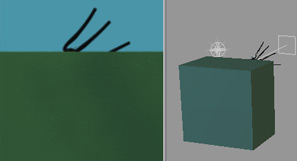
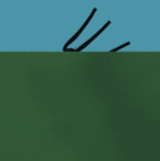
Just for fun, I wanted to see how an object would react within an SSS object. In contrast to the above, it seems more of the object is revealed from front to back as the Surface Thickness is increased in .1 increments (.1 to .7).
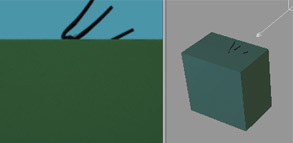
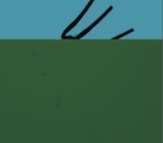
Future studies will include:
Distance of spider from SSS object and how it affects the back shadow
Distance of the light source and how it affects the back shadow
Transparency of spider using Transmissive Shadow and how it affects the back shadow
| Converted from CHM to HTML with chm2web Pro 2.82 (unicode) |